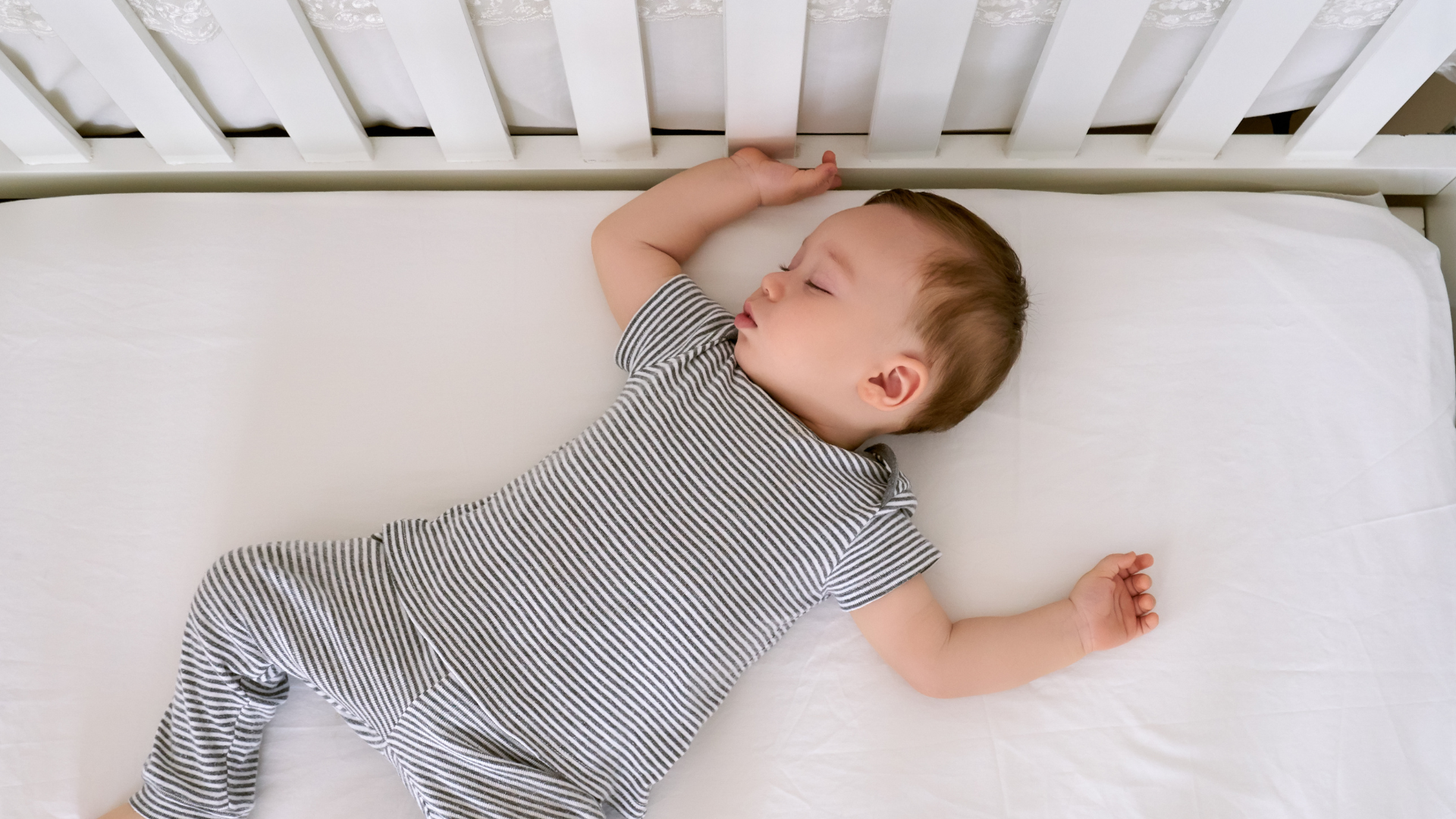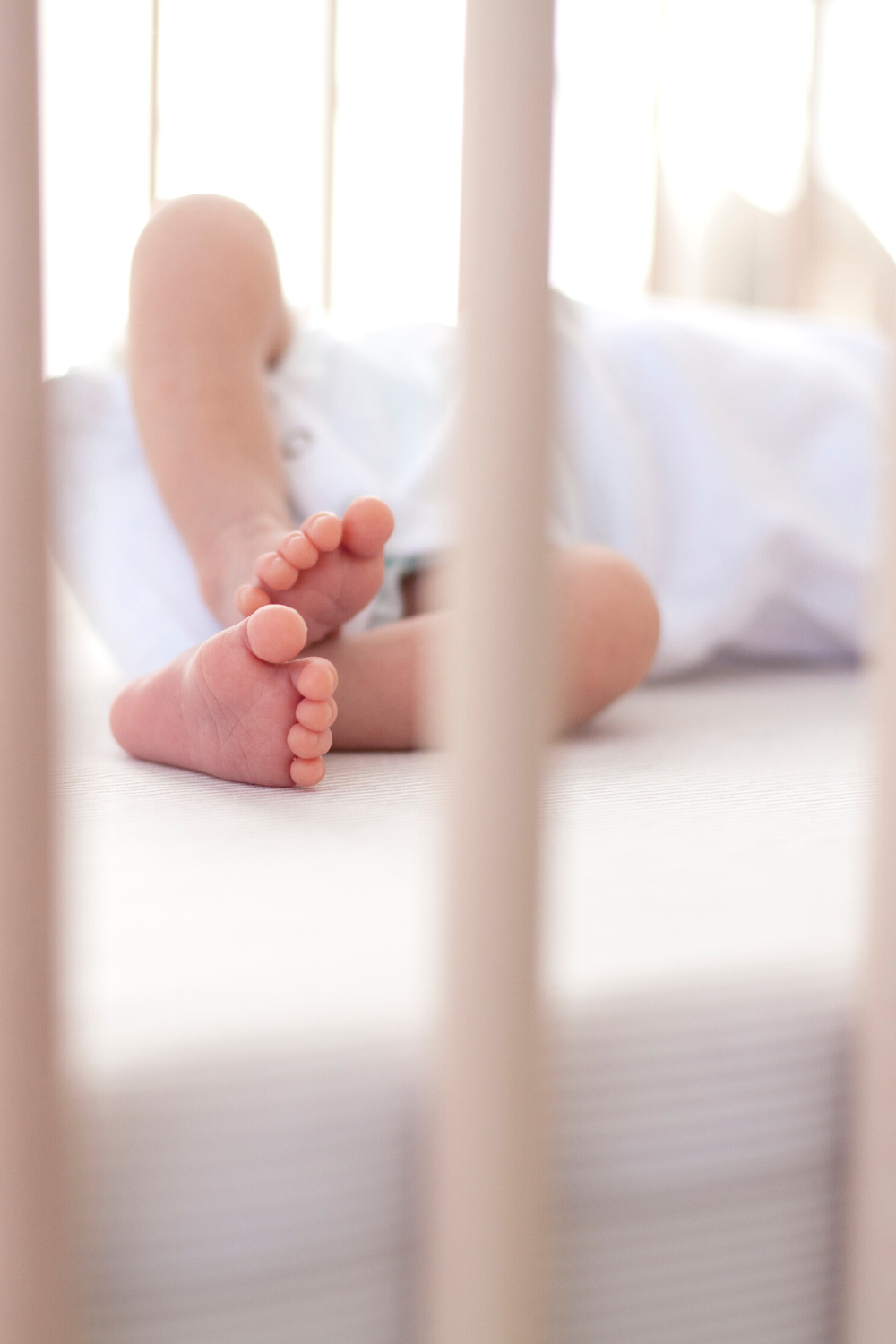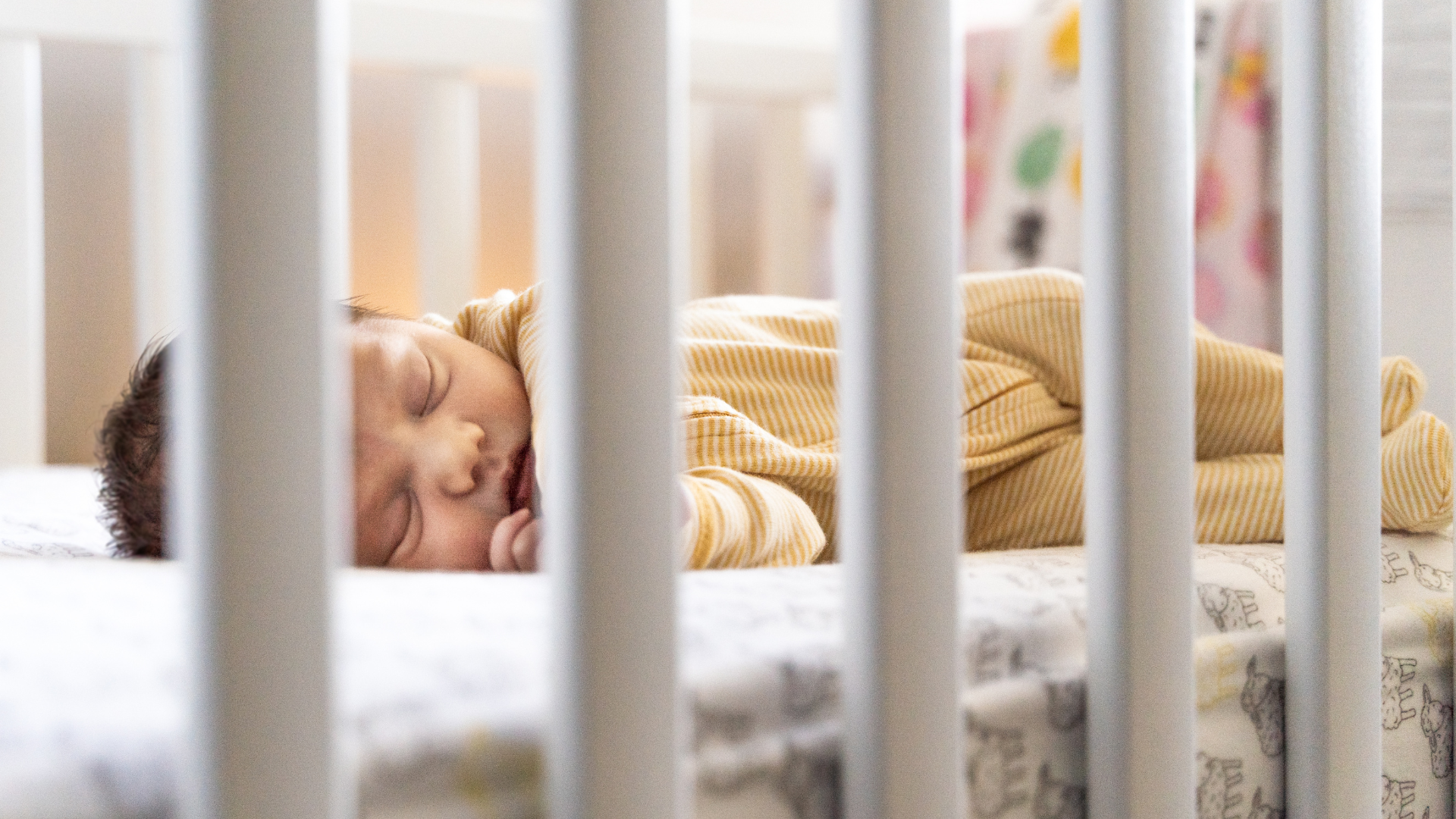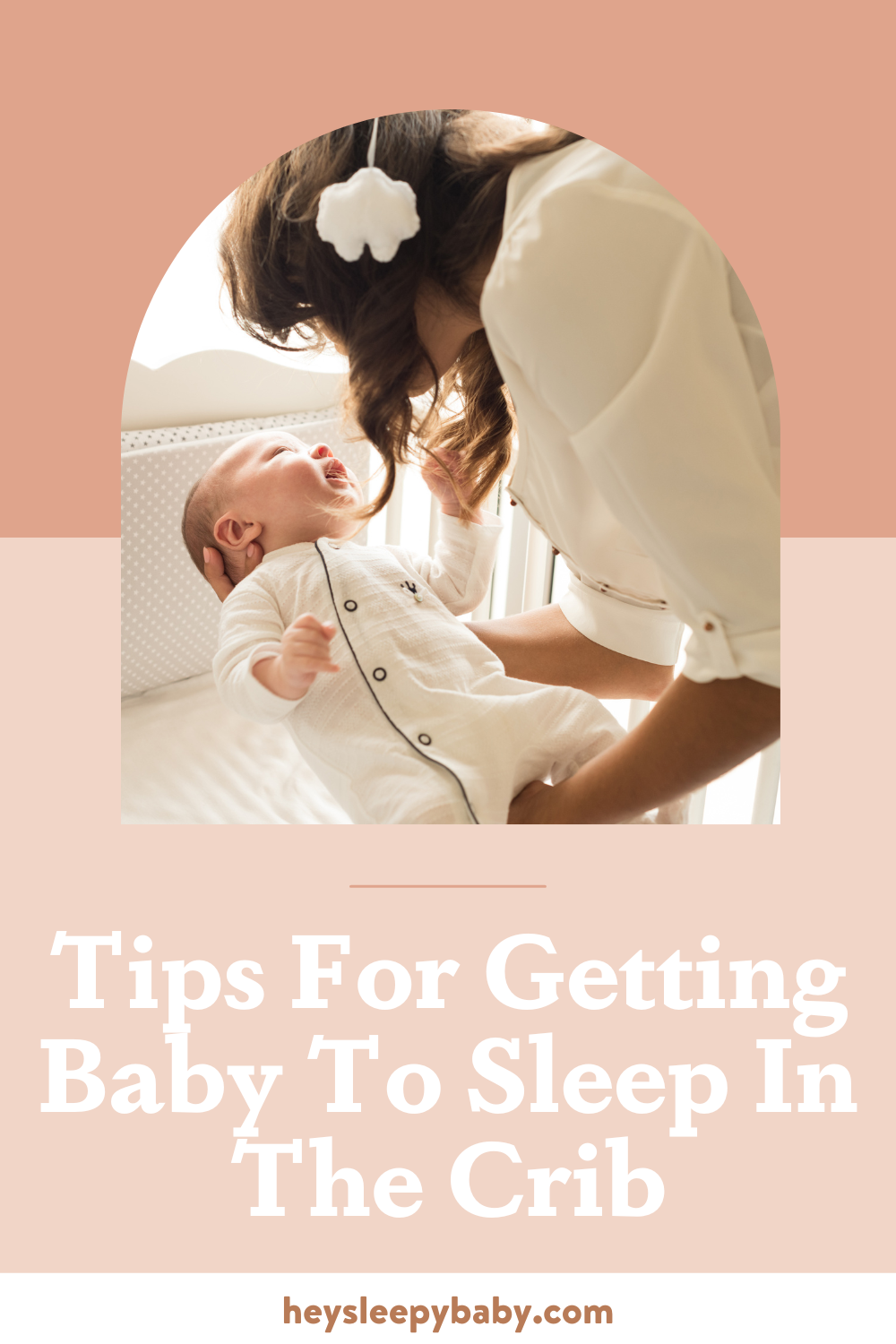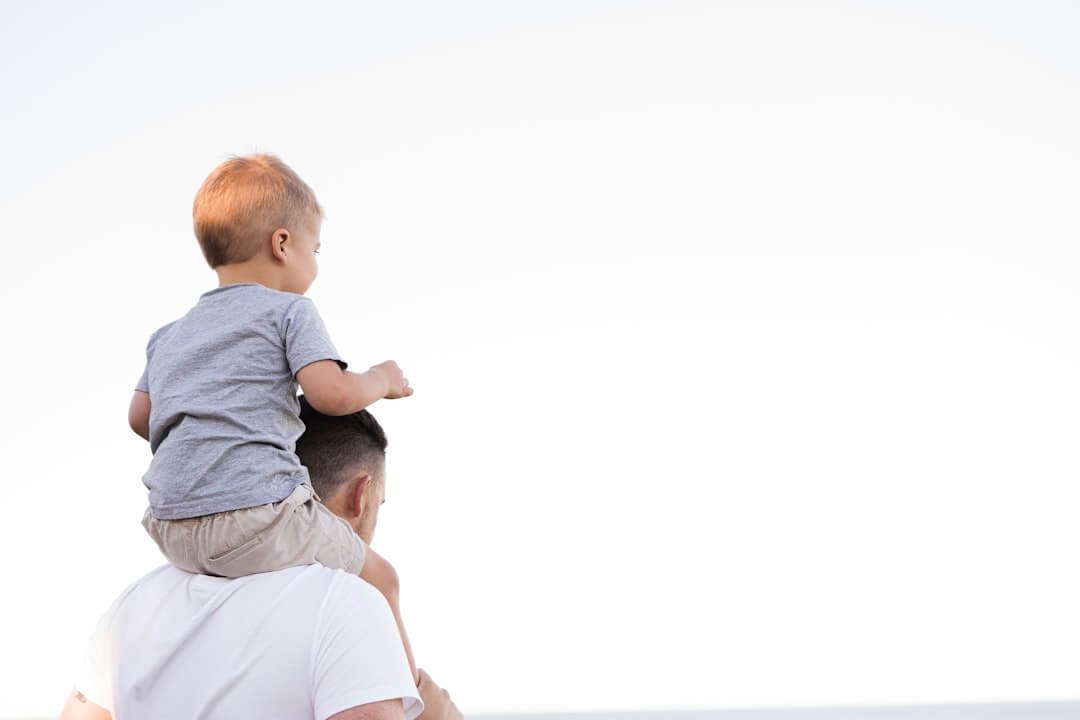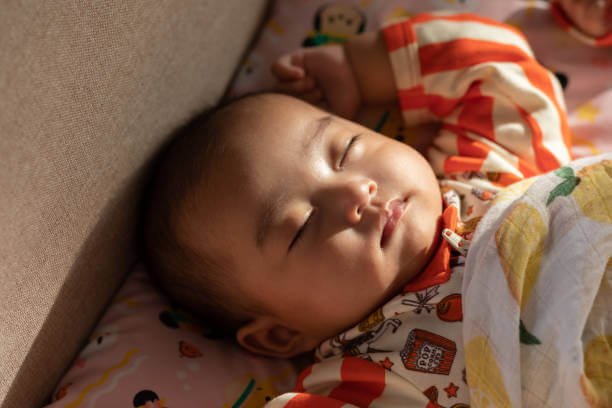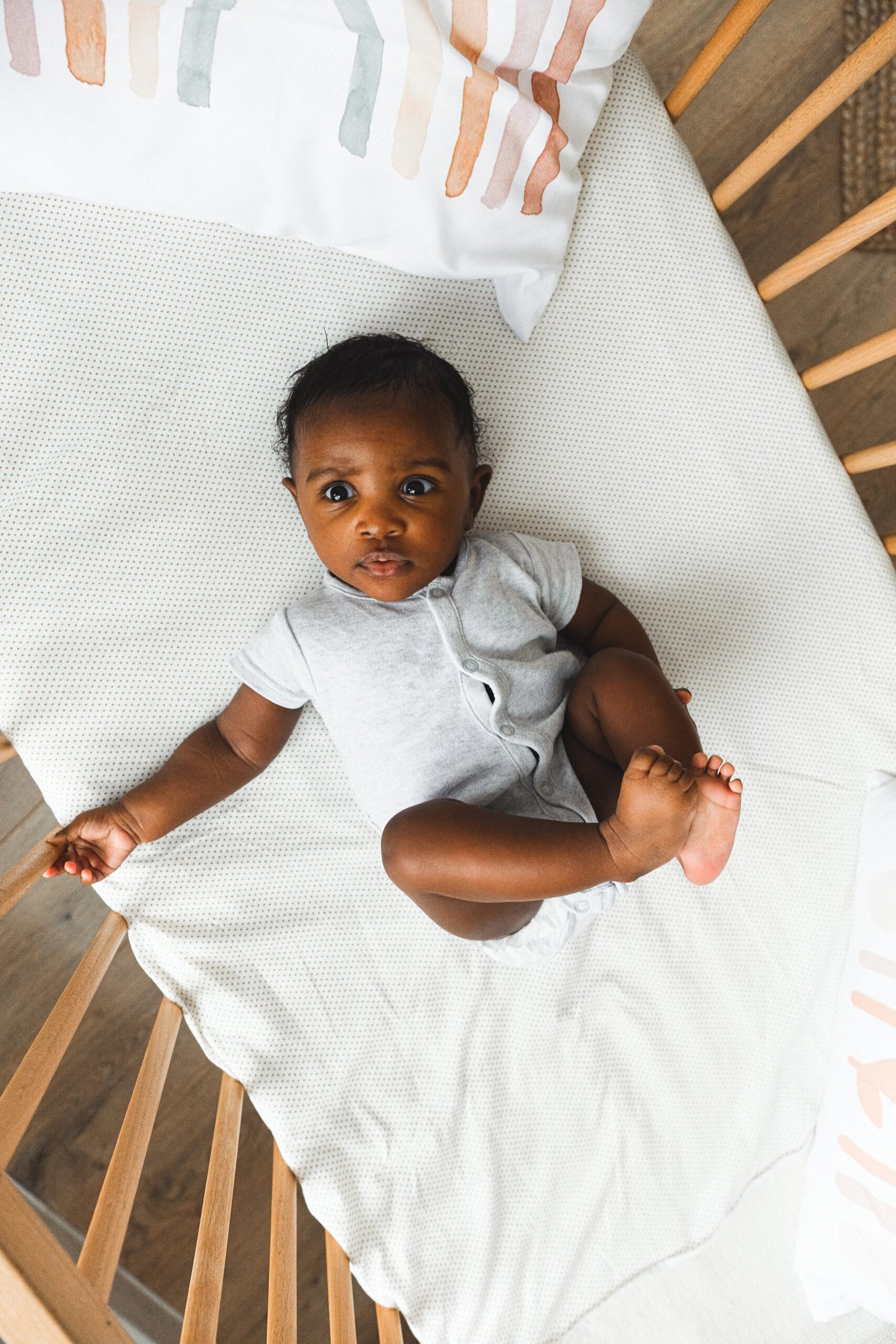For all the tired mamas who have been contact napping, motion napping, and bedsharing and who are ready to help baby to sleep in the crib or bassinet – here are some great tips for smoothing this transition gently and get baby to sleep without sleep training!
Are you ready for baby to do some stretches in the crib but your baby has other ideas? You’ve tried countless times to help baby sleep in the crib but they just don’t seem to take to it! In fact, sometimes it feels as though they outright detest the crib even for the shortest periods! Maybe frustration is rising, resentment is building, or you are desperate for a length of time where you aren’t being touched and you are absolutely ready for your baby to sleep in the crib instead of your arms.
Why Babies Struggles with Crib Sleep
Biologically speaking babies innately dislike the crib. They are hardwired to want to be close to their caregivers to survive and this drive does not just switch off at night. Maybe you’ve noticed – babies just love being with their caregivers! But can you really blame them? Mom’s/caregivers are warm, soft, smell familiar, have gentle rhythmic movement, and the soothing sound of a heartbeat. Cribs however are hard, cold, don’t move, and leave the baby alone with no access to their needs being met. Which would you prefer? The crib is not going to be somewhere they automatically love BUT we can build a positive relationship with the crib so that the baby begins to feel safe and at ease in the space. We can gently and lovingly nudge them to help baby move from co-sleeping to crib.
Busting the Myth
We are often led to believe it’s either or, contact sleeping or crib sleep but this is absolutely not the case. Sometimes mom’s can be scared into thinking that we will confuse babies by not being consistent or spoil them by holding them too much but this just isn’t true! In reality, a mixture of the two can ease the transition and can be the best of both worlds for both mom and baby. You can snuggle and rest when you need to and to be able to put them down when you have things you just really need to get done.
Top Tips To Help Your Make This Transition
So here are some tips for helping transition your baby to sleep in the crib. The first thing to think about is the space. Babies love familiarity to help them feel safe. If this is a new sleep space you can positively familiarize your baby with the crib and help them feel comfortable by having connection time in the area. Lots of singing, nursing, games, laughter, and cuddles so this becomes a warm and loving space for them in their awake periods. Alongside this, before you begin getting your baby to sleep without being held, you can build in some solid sleep associations. Often babies associate their caregiver’s warmth and smell with sleep but you can add to this. Things such as patting, singing familiar sleepy songs, humming, or sshhing will all help with the initial transition. Squirting breastmilk on the sheet or sleeping on the sheet for a few nights so it smells of you can help your baby to feel close to you in this new space. To combat the stark difference in temperature between mom and crib you can preheat the space with a hot water bottle or warm towels so that they aren’t transitioning from a warm snuggly body to a cold crib! Make sure to remove these before you attempt the transfer. These tips will help to resettle your baby once you have transferred, and they are stirring a little and need a little sleep reassurance.
Nailing the Transfer
Once these sleep associations have been layered in, you can begin planning for the transfer. Nailing your timing is important. An undertired baby might resist the nap and think it’s time to play and connect and an overtired baby will have a hard time settling. You can track your wake windows for a few days to try to pinpoint the most effective timings. Once you have got your baby to sleep, timing again plays a role! Too little time before the transfer (10 minutes) and they might not be deeply enough sleep and will wake as you transfer to the crib and too much time before transfer (25 minutes) they might wake up and be done napping completely! One way to check if your baby is in a deep enough sleep is to lift their arm and see if it falls like a ‘limp noodle’, if it does this is a great time to attempt a transfer.
The transfer itself requires a few special tips. Remember no sudden movements! Often when babies are transferred it can feel like they are freefalling which startles them and wakes them up understandably. To combat this, we can place them into the crib butt first at an angle and then slowly lower their head and body down to the mattress supporting their weight with your hands. Don’t remove your hands straight away. Slowly feel your hands out from underneath, one hand at a time, and place some pressure on them to calm and soothe the transition. Another way to place them down is on their side and then once you feel their bodies relax and settle slowly and gently roll them onto their backs. Babies like different methods and over time you will work out what methods and sleep associations effectively soothe your baby.
Keeping the Sleeping Space Safe
When looking to move towards baby naps in the crib you need to ensure the new sleep space is safe. For safe crib sleep there needs to be no bumpers, blankets or pillows. It’s easier to opt for a wearable blanket or sleep sack for warmth. Make sure there are no open windows and wires, and blind cords and curtains are out of reach. Loveys can be introduced after 12 months but pacifiers are considered safe. The other thing to consider is shelving and wall hangings and make sure these are not accessible from the crib.
So if you are looking to transition a baby from sleeping in your arms to sleeping in the crib remember to make sure the sleep space is familiar, your sleep associations are built up and secure, and your transition technique is gentle. Good luck mama!
If you need a more comprehensive guide for ways to help baby sleep independently in the crib, bassinet or floor bed, check out the crib and floor guide from @heysleepbaby.
The Crib Guide and Tender Transitions Course will help you find additional information and a bank of ideas to help facilitate this transition gently.
